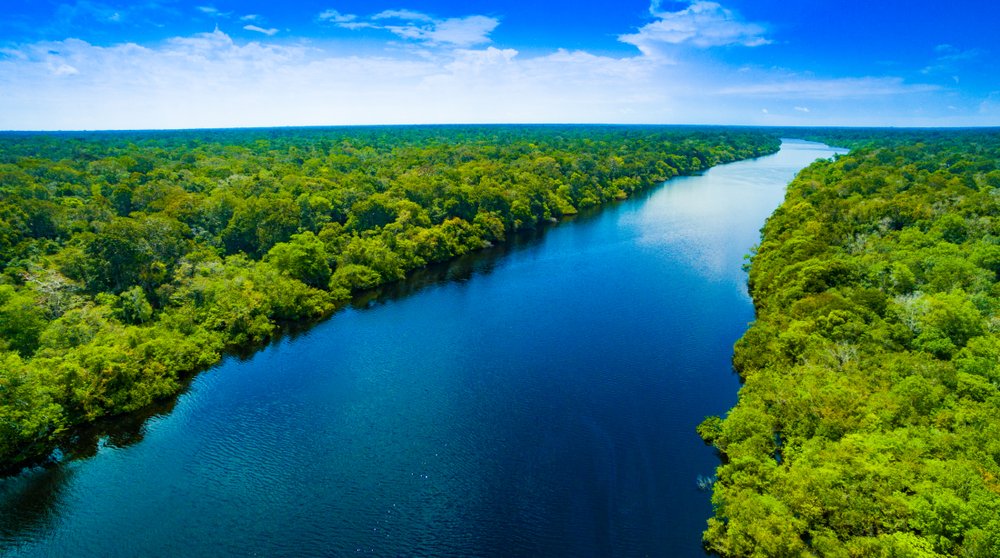Why is there no bridge over the Amazon River?
Despite its length of nearly 7,000 km, the strange thing is that the Amazon River has no bridge across it. The cause is believed to stem from factors such as insufficient construction demand, cost and technical challenges.

Amazon River.
The Amazon River is the second longest river in the world and one of the most important waterways on the planet. This river can store more freshwater than any other river, is home to the world's largest river dolphins as well as 100 species of electric fish and 60 species of piranha. However, there is no bridge across the Amazon River. It flows through 3 countries (Peru, Colombia and Brazil) with more than 30 million people living in the river basin, according to the World Wildlife Fund (WWF), so having no bridges on the river is considered a very hard to believe.
When compared to many other famous rivers, in Cairo alone, there are 9 bridges spanning the Nile and more than 100 bridges built over the Yangtze River in Asia in the past 30 years. While only a third as long as the Amazon River, the Danube in Europe has 133 bridges.
"The demand to build a bridge on the Amazon River is not great enough," said Walter Kaufmann, head of structural engineering at the Swiss Federal Institute of Technology (ETH) in Zurich.
For most of its total length of 6,920 kilometers, the Amazon River winds its way through sparsely populated areas, meaning there are few major roads to connect to any bridges. In riverside towns and cities, boats and ferries are the main means of carrying goods and people from one shore to the other. Therefore, the need to build a bridge is not really urgent.
Besides, Mr. Kaufmann said that the construction of the bridge is also associated with technical and logistical difficulties. The Amazon River is not an ideal location for contractors due to a series of natural obstacles that engineers and construction workers need to overcome.
For example, dense swamps and soft soil will require very long aqueducts and very deep foundations, resulting in huge costs. In addition, the location of the river changes through the seasons, along with the stark difference in depth, which also makes the construction process particularly difficult. That's because river levels rise and fall during the year.
While these problems also exist elsewhere, in the Amazon River the problem is particularly acute. 'The environment at Amazon is definitely among the toughest in the world. It is very challenging to build a bridge over the river if the water level is deep, but at least the construction process will be possible if using a pontoon bridge,' Mr. Kaufmann said.
However, pontoon bridges are not an effective solution in most sections of the Amazon River as the river is highly influenced by seasonal fluctuations, increasing complexity. For example, in the dry season from June to November, the average width of the Amazon River is 3.2 – 9.7 km while in the rainy season from December to April, the river can widen up to 48 km. and the water level is 15 meters higher than in the dry season, according to Britannica.
Although there is no bridge over the Amazon River, there is one that spans the Negro River, its main tributary. Called Ponte Rio Negro, completed in 2011, connecting Manaus and Iranduba, it is the only major bridge spanning the tributary of the Amazon River.
Although there are no concrete plans to build a bridge in the Amazon, it is still possible, said Philip Fearnside, an American biologist and conservation expert. In 2019, Brazilian President Jair Bolsonaro said that he wanted to build a bridge on the Amazon River in the Rio Branco project. However, Mr. Fearnside said that the cost of building the bridge will be very expensive compared to the economic benefits that the project brings.
- Why does the Amazon River longer than 6,000km without a bridge spanning?
- Found the cause of the Amazon River instead of flow
- The Amazon River emits most of the carbon absorbed by the Amazon
- The Amazon river system originated in Peru
- Amazon underground river is not ... river
- The river has two colors of water mixed in Brazil
- Large ice bridge collapses on the river in Argentina
- See the most beautiful bridges in Vietnam
- The new discovery helps the Amazon River become the world's longest river
- The most frightening and attractive bridges on the planet
- A bamboo bridge over a kilometer long can bear a load of 4 tons
- The river boiled water boiled everything in the Amazon forest
 The most famous scientific failures in history
The most famous scientific failures in history Mysterious genius mechanic and the machine froze time
Mysterious genius mechanic and the machine froze time The son carries the 'bad gene' of genius Albert Einstein
The son carries the 'bad gene' of genius Albert Einstein Isaac Newton
Isaac Newton